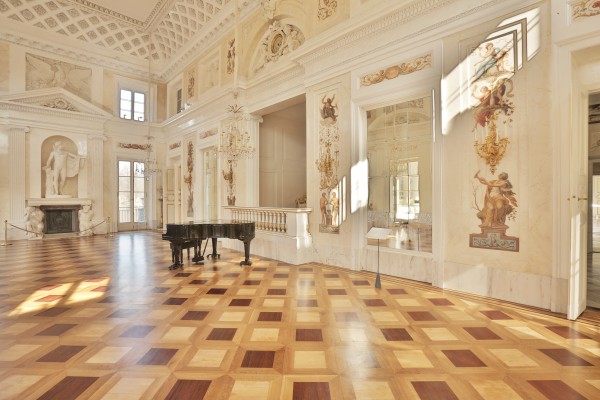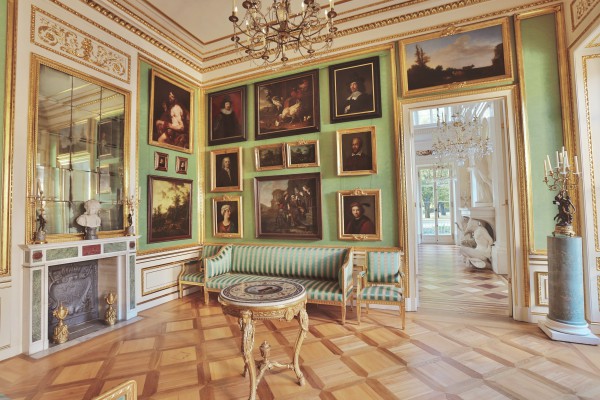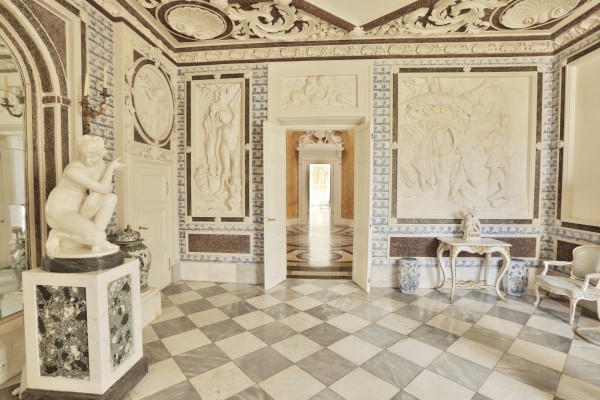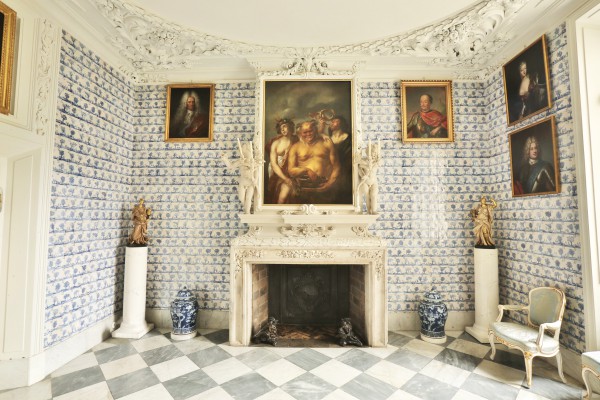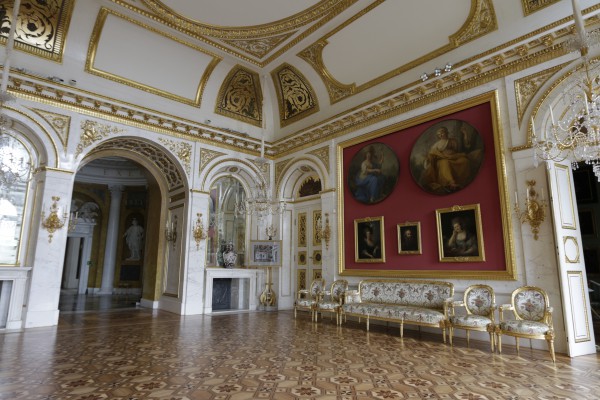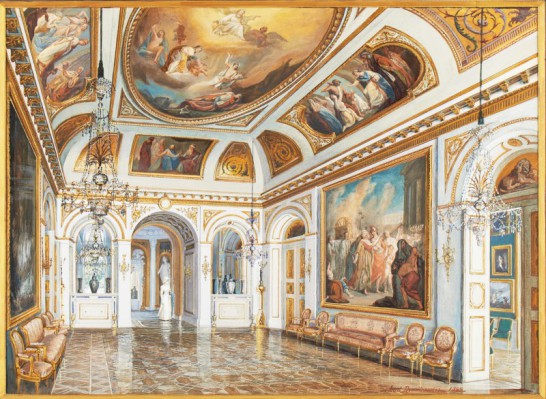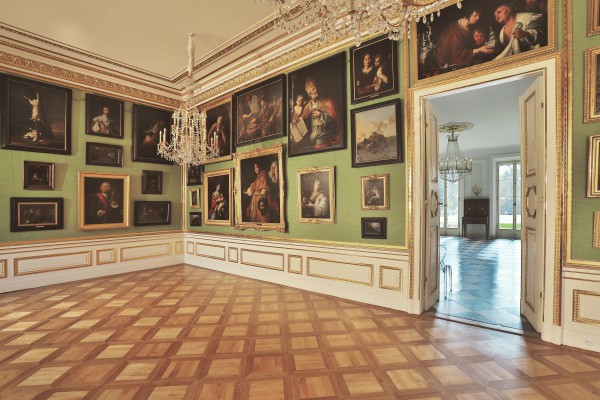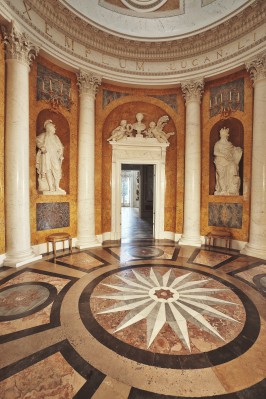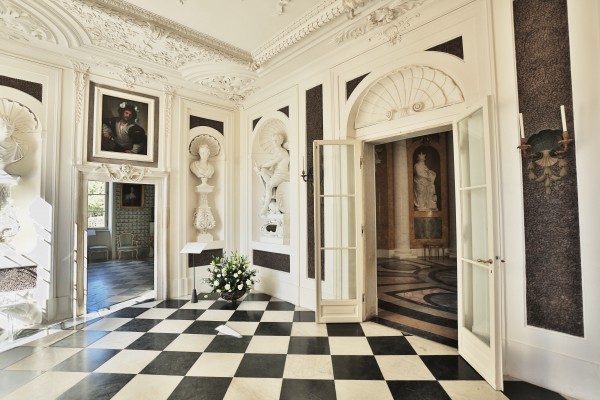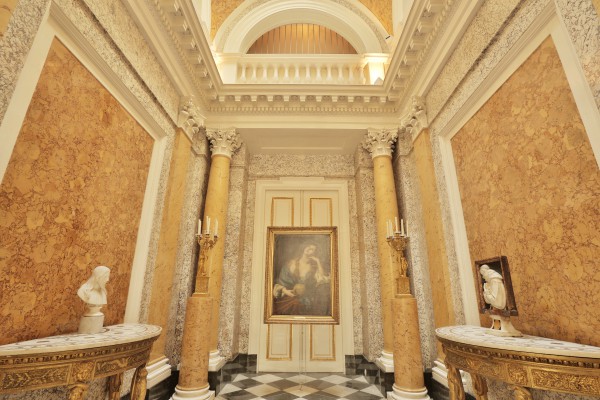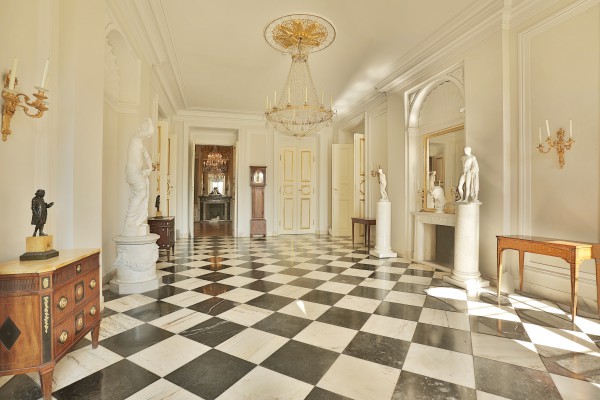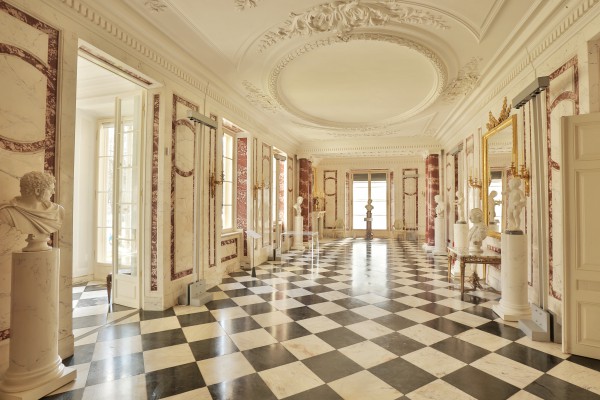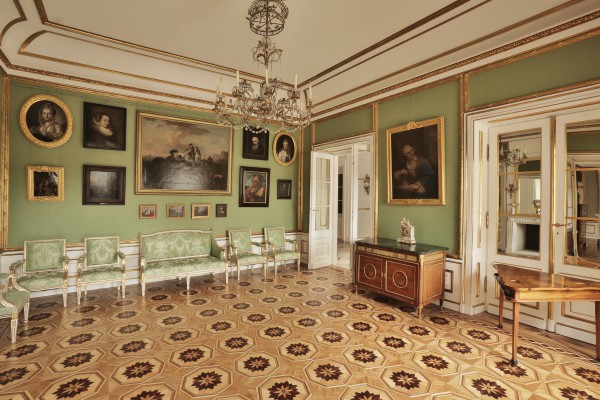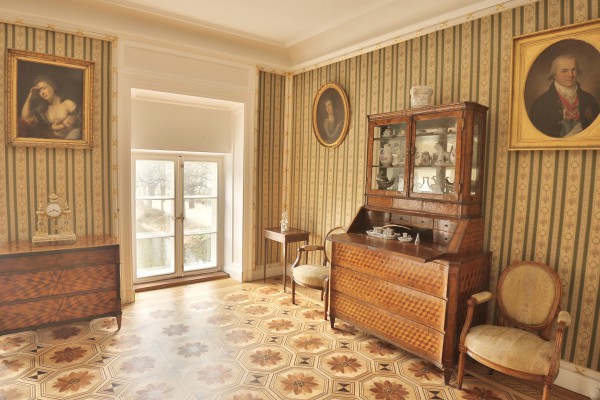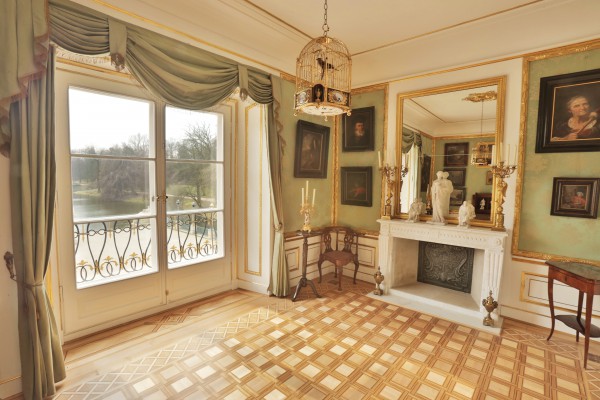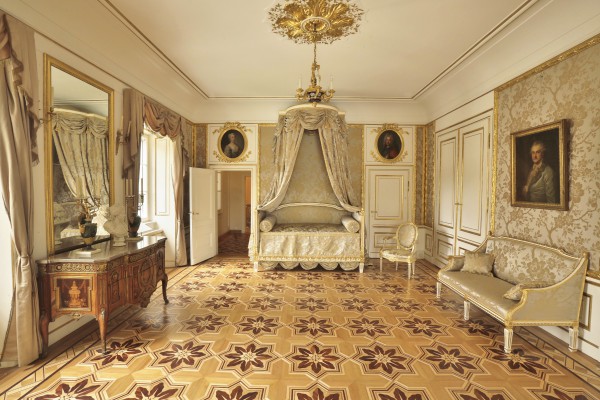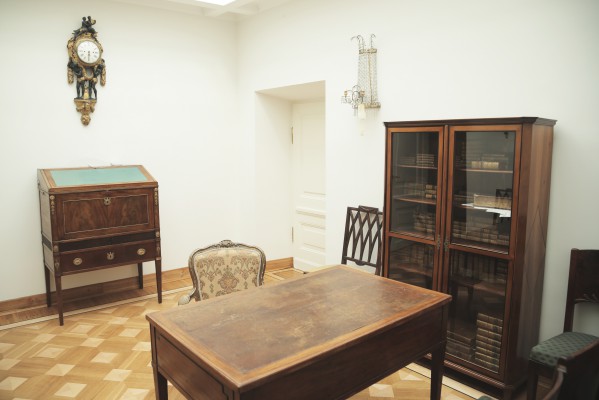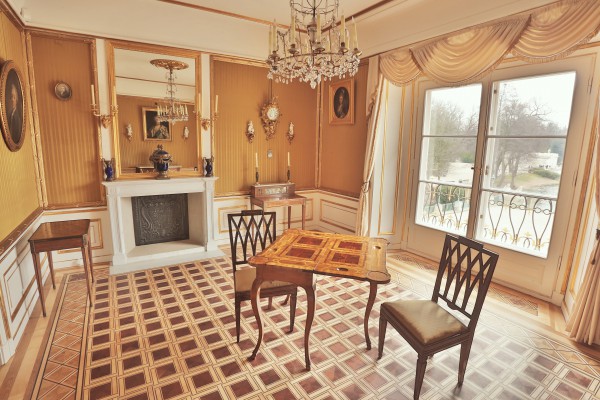
The Vestibule
The Vestibule is one of the oldest parts of the Palace, which was built in 1683 as a Residence-Bathhouse of Stanisław Herakliusz Lubomirski. The Baroque decor of this residence has basically not changed after the purchase of the villa by Stanisław August or during the two World Wars. Two niches are carved out on each side of the three doors leading to the next rooms of the residence. Central gates, the most imposing ones – crowned with a great shell – stand on the flanks of the interior, which houses the sculpture of Mars at Rest (to the left), and the personification of Poland Flourishing (to the right). These pieces convey to visitors entering the residence that they are greeted by Peace and Happiness. The west and south walls are decorated with niches with busts of unidentified women and men – unnamed Roman emperors. They most likely belong to the symbolic arrangement of the decoration. In addition, all niches are crowned with shells, which signify immortality. However, they particularly allude to water, the symbols of which appear as decorative themes all around the Palace. In the first place, it stems from the situation of this residence, which is located on an island laying in a water reservoir. Secondly, the shell is a reference to the mythological Hippocrene spring, which filled poets with inspiration. The spring was visualised with water flowing out of the fountain – installed in the centre of Lubomirski’s residence – in an artificial cave, which existed until 1788. Lastly, the shell symbolizes Venus, the goddess of love, who was born from sea foam. The cave and the bathroom were also an intimate retreat, where Lubomirski spent enjoyable moments with his second wife, Elżbieta Denhoff.
